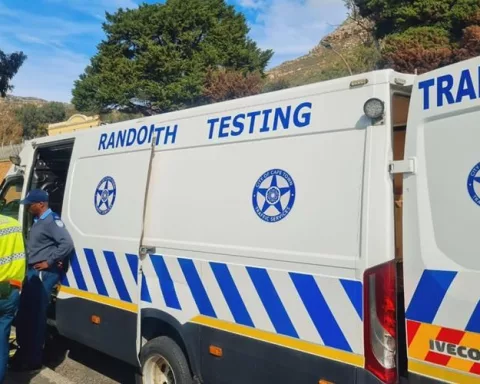Highway marker signs in South Africa are important geographic indicators that pinpoint your location in case of emergencies, potentially saving lives. During the festive season, when many South Africans travel, understanding the language of these signs is crucial to prevent mishaps. The signs are simple with the road name, segment, distance, and direction, and are strategically placed every 200 meters on national highways. It’s important to know the main operators and assistance contacts for designated routes, and to appreciate these silent guardians of our roads for safe travel.
What are South Africa’s Highway Marker Signs and Why are They Important?
Highway marker signs are geographic indicators that pinpoint your precise location in the event of an emergency, making it easier for emergency services to locate you. Their sharp accuracy in location identification can speed up emergency response times, potentially saving lives. Understanding the language of these signs is crucial, particularly during the festive season when many South Africans travel the primary routes to their holiday destinations.
Understanding the Highway Marker Signs
The exploration of South Africa’s primary routes is an adventure comprised of captivating landscapes, cultural vistas, and an array of highway marker signs, the latter frequently ignored, their significance unknown to many. These inconspicuous markers, packed with substantial life-saving data, potentially hold the key to survival in an emergency situation.
Highway marker signs are a common sight along South Africa’s main routes. They are fundamentally geographic indicators, designed to pinpoint your exact position in the event of an emergency, making it easier for emergency services to locate you. This sharp accuracy in location identification can speed up the response time of emergency services, a factor that can be life-saving in the case of severe injuries.
As the festive season approaches, the need to comprehend the language of these highway marker signs becomes ever more crucial. The interpretation of these signs can prevent a delightful holiday from descending into a nightmare due to an unexpected mishap.
Analyzing the Marker Boards
The layout of the highway marker sign is pretty simple. The road’s name is presented in the top left corner, the specific segment of the route is in the top right, the kilometer distance identifying your location is in the bottom left, and the direction of travel is in the bottom right. On national highways, these signs are strategically placed every 200 meters, making them nearly impossible to miss.
The importance of these highway marker signs is immense, particularly during the festive season when a large majority of South Africans travel the primary routes to their holiday destinations. In the spirit of promoting safe journeys, a list of essential emergency contacts is also provided.
Main Operators and Assistance
It’s significant to remember that distinct toll companies manage different major routes, with several key players in the industry, including SANRAL, Bakwena, the N3 Toll Concessionary, and TRAC. It’s recommended to write down the pertinent contact information before setting out on your holiday.
The Automobile Association (AA) offers extensive roadside assistance. Bakwena and N3TC cater to designated routes, while the SANRAL call center and TRAC have unique emergency numbers.
The purpose and function of the highway marker signs are not universally recognized among South Africans and tourists. However, their role in ensuring road user safety is invaluable. Their continual presence along main routes, the abundance of data they provide, and their potential to save lives make these ever-present signs of utmost importance, demanding our attention and comprehension.
Preservation of Safety
As you journey through the breathtaking landscapes of South Africa, be vigilant of these signs. Their discreet presence along the routes may seem insignificant, but in crisis situations, they convey critical information, making the difference between a peaceful journey and a possible disaster.
Bear in mind, comprehending the language of highway marker signs is not complex. With a modicum of attention and understanding, you’ll be adequately prepared to manage any potential road emergencies. Therefore, let’s travel safely, appreciate these silent guardians of our roads, and ensure that we arrive at our holiday destinations securely.
For a continuous source of updates, follow us @TheSANews on X and The South African on Facebook. We encourage our community to engage in the comments section and share their experiences and thoughts on highway marker signs in South Africa. Your insights might just aid another traveler on their journey.
1. What are South Africa’s Highway Marker Signs and why are they important?
Highway marker signs in South Africa are geographic indicators that pinpoint your location in case of emergencies, potentially saving lives. They are important because their sharp accuracy in location identification can speed up emergency response times, making it easier for emergency services to locate you.
2. Why is it important to understand the language of South Africa’s Highway Marker Signs?
Understanding the language of South Africa’s Highway Marker Signs is crucial, particularly during the festive season when many South Africans travel the primary routes to their holiday destinations. The interpretation of these signs can prevent a delightful holiday from descending into a nightmare due to an unexpected mishap.
3. What information is provided on a Highway Marker Sign?
The road’s name is presented in the top left corner, the specific segment of the route is in the top right, the kilometer distance identifying your location is in the bottom left, and the direction of travel is in the bottom right.
4. Which companies manage different major routes in South Africa?
Distinct toll companies manage different major routes in South Africa, with several key players in the industry, including SANRAL, Bakwena, the N3 Toll Concessionary, and TRAC. It’s recommended to write down the pertinent contact information before setting out on your holiday.
5. What is the purpose of South Africa’s Highway Marker Signs?
The purpose of South Africa’s Highway Marker Signs is to ensure road user safety. Their continual presence along main routes, the abundance of data they provide, and their potential to save lives make these ever-present signs of utmost importance, demanding our attention and comprehension.
6. How can travelers ensure their safety while on the road in South Africa?
Travelers can ensure their safety while on the road in South Africa by being vigilant of the highway marker signs and comprehending their language. It’s important to appreciate these silent guardians of our roads, and ensure that we arrive at our holiday destinations securely.












